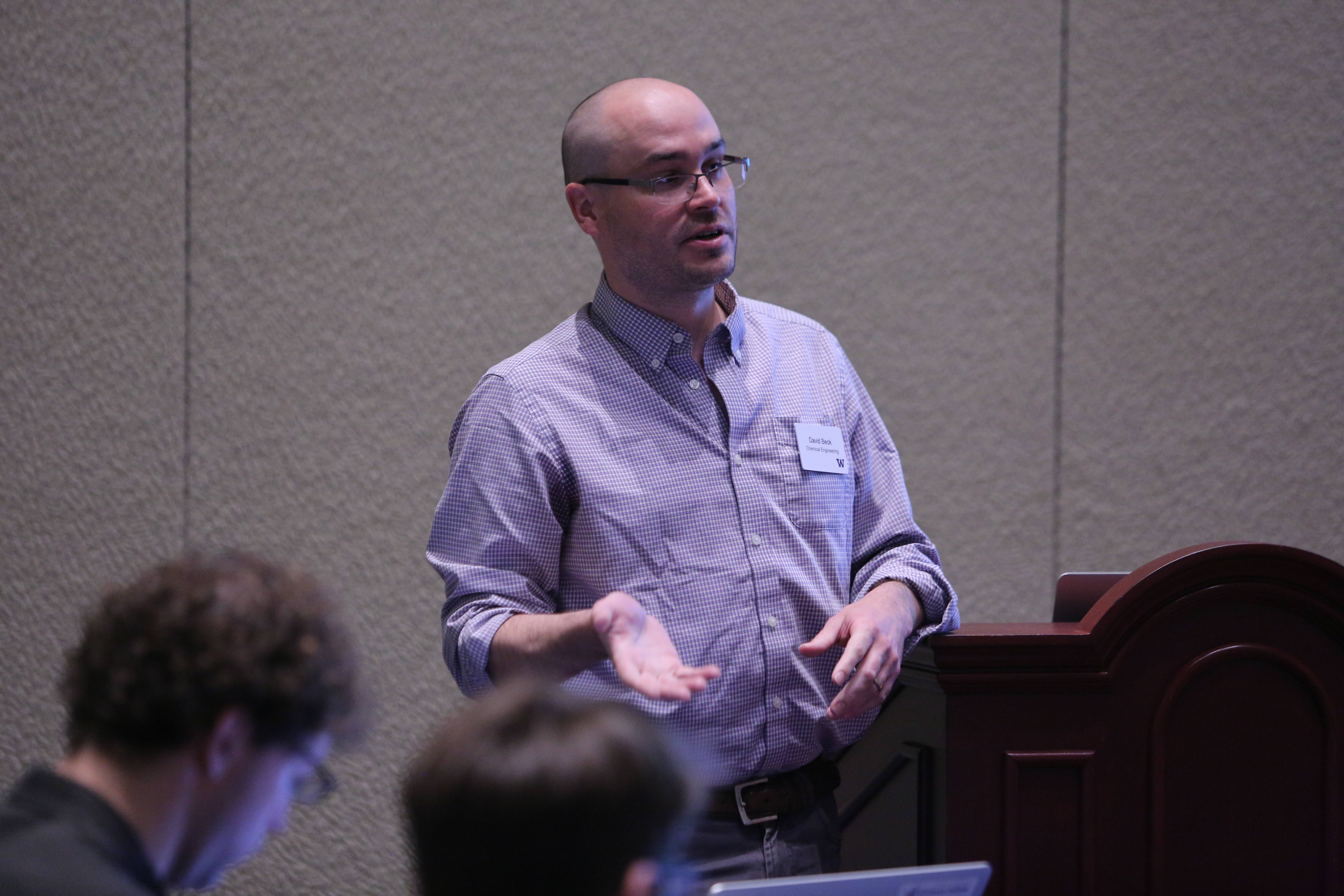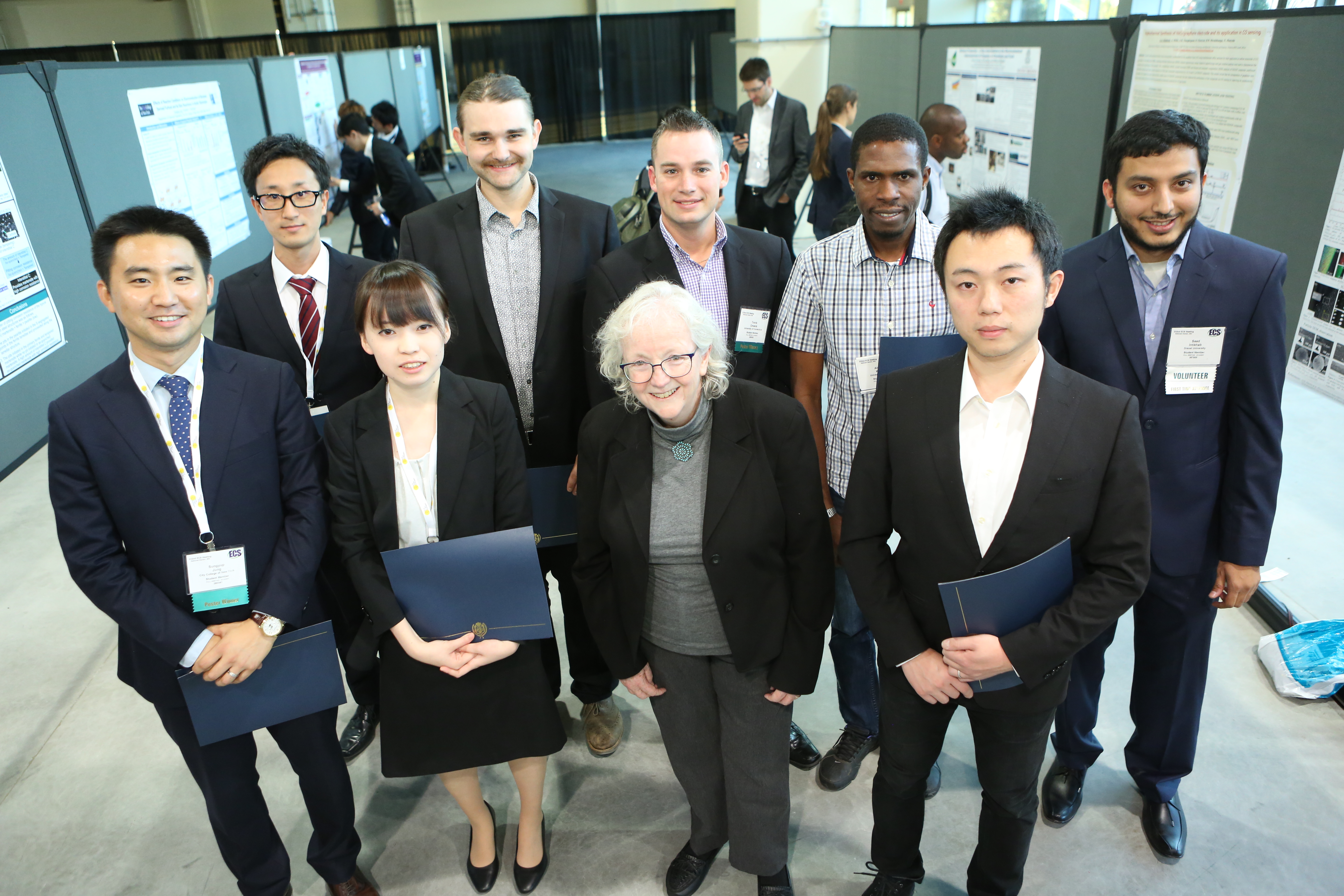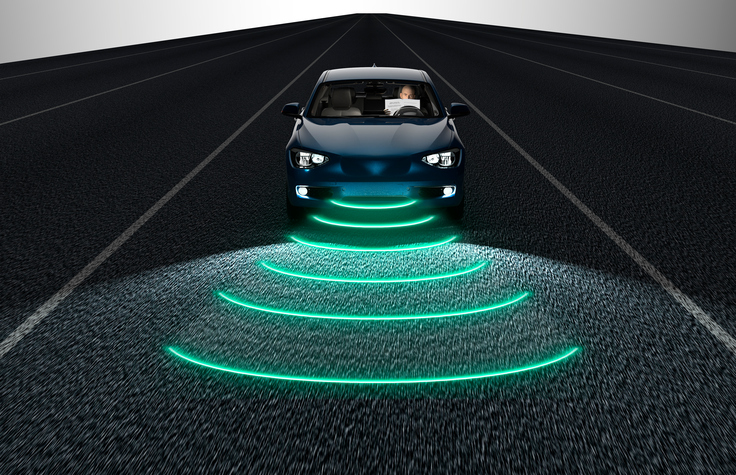By: Matt Murbach, University of Washington

Co-organizer David Beck led a hack session during the ECS Data Sciences Hack Day.
The full vibrancy of the electrochemical community was on show during the recent 232nd ECS Meeting in National Harbor, MD. Adding to the diversity of ideas and excitement for electrochemistry were the 30 participants of the inaugural ECS Data Sciences Hack Day on Wednesday, October 4. The participants in the hack day traveled from around the globe and represented varying stages of careers in both academic and industry roles.
The day-long event was kicked off with a short series of informational sessions covering some of the essential tools in any data scientist’s toolbox. During lunch, participants pitched their ideas for projects, and teams for the afternoon session organically formed around common interests. The remaining time during the afternoon was reserved as open “hacking” time for working on the project ideas. Excitingly, good progress was made in this four-hour block with teams working on a wide variety of projects, including:



 Engineers have developed a 4-in-1 smart utilities plant that produces electricity, water, air-conditioning, and heat in an environmentally friendly and cost-effective way.
Engineers have developed a 4-in-1 smart utilities plant that produces electricity, water, air-conditioning, and heat in an environmentally friendly and cost-effective way.
 In the wake of car- and truck-based attacks
In the wake of car- and truck-based attacks  Scientists have developed an extremely efficient “molecular trap” that can be recycled and reused to capture radioactive iodides in spent nuclear reactor fuel.
Scientists have developed an extremely efficient “molecular trap” that can be recycled and reused to capture radioactive iodides in spent nuclear reactor fuel. Capitalizing on tiny defects can improve electrodes for lithium-ion batteries, new research suggests.
Capitalizing on tiny defects can improve electrodes for lithium-ion batteries, new research suggests. A method to overcome the inherent trade-off between strength and flexibility in certain types of polymers gets inspiration from the tough, flexible polymeric byssal threads that marine mussels use to secure themselves to surfaces in the rugged intertidal zone.
A method to overcome the inherent trade-off between strength and flexibility in certain types of polymers gets inspiration from the tough, flexible polymeric byssal threads that marine mussels use to secure themselves to surfaces in the rugged intertidal zone. Urban air pollution in the U.S. has been
Urban air pollution in the U.S. has been